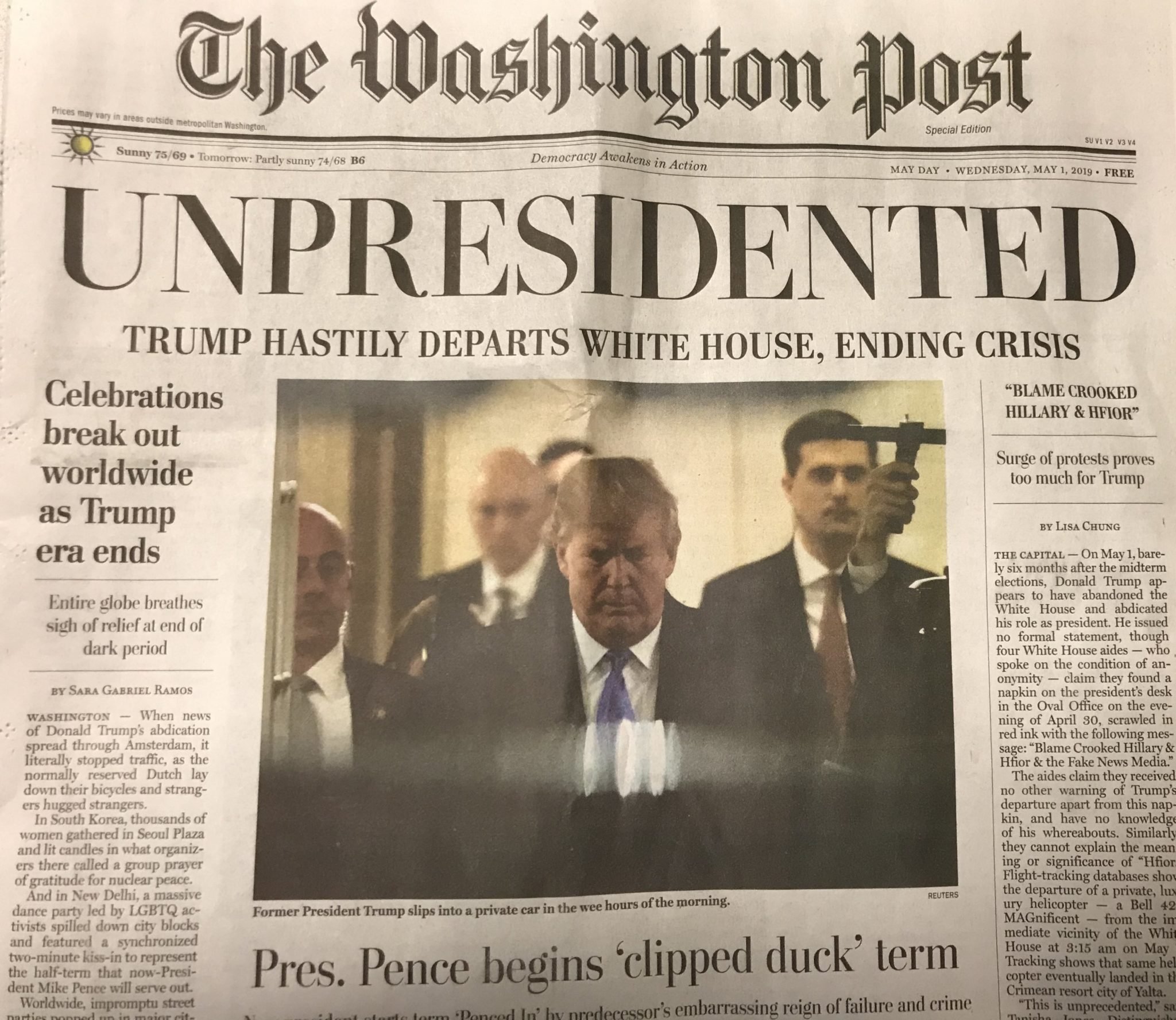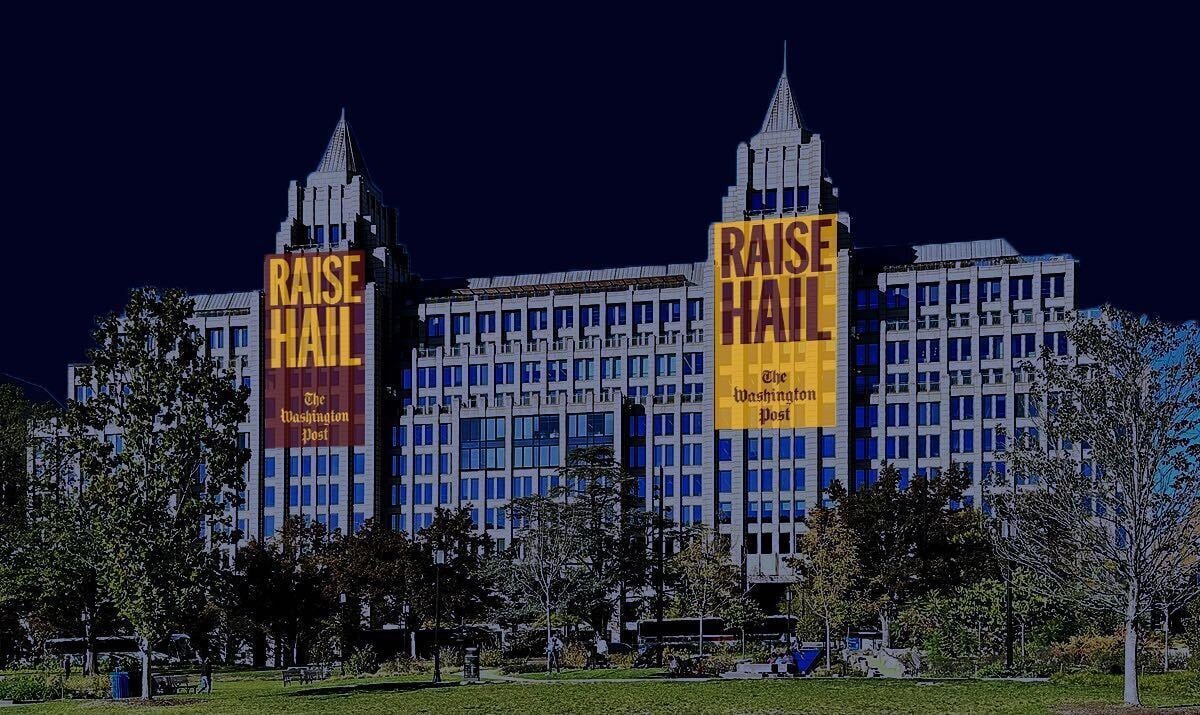Donald Trump’s presidency ended in the wee hours of May 1, 2019, a victim of a ballooning, women-led nonviolent protest movement that he abetted with stupid tweets. He is currently believed to be in Crimea. Meanwhile, a package of 64 bills known as “The Bundle,” which includes Medicare for All, breaking up Facebook and Amazon, and abolishing student debt is rocketing through Congress, and the New York Times apologized for abetting Trump’s rise.
At least, that was the vision back in January, when the activist author L.A. Kauffman and other similarly motivated pranksters passed out parody copies of the Washington Post around DC. Both the print iteration of the paper, which was dated May 1, and its digital edition mimicked the real Post‘s design so closely that the company sent a cease-and-desist letter to Kauffman, writer Onnesha Roychoudhuri, Andy Bichlbaum, and the Yes Men, a “culture jamming” group that handed out parodic editions of New York newspapers in the first decade of this century.
News outlets all over the US and the world covered the stunt, despite concerns that producing actual fake news could help legitimize bad-faith arguments against the press. “Nobody seemed to be batting an eye that we were essentially calling for a nonviolent uprising to create regime change,” says Kauffman of journalists’ focus on the form of this parody rather than its content. “It was a really cramped, embattled reaction.” We spoke on April 30, the day alternate-universe Trump vanished, leaving a mysterious message written on a napkin on the Resolute desk: “Blame Crooked Hillary & Hfior & the Fake News Media,” according to the parody.
First things first: “Hfior” (which I’ve been trying to figure out for months) doesn’t mean anything: “That’s just completely made up,” Kauffman says. “It’s supposed to be like ‘Covfefe.'” The stunt took about nine months to plan and a few months of intense work to make happen; the papers were printed in Brooklyn and brought down; afterward, Kauffman says, extras were distributed to local Women’s March chapters around the country.
The organizers hadn’t taken into account the government shutdown when planning the paper, so its A1 subheadline, “TRUMP HASTILY DEPARTS WHITE HOUSE, ENDING CRISIS,” may have made some people look twice (the actual shutdown ended nine days later). Kauffman still remembers fondly that some people on their way into the White House picked up copies.
It’s worth remembering the political moment even a few months ago. A new Democratic-led House had been sworn in two weeks earlier, and the timing and content of Robert Mueller’s report were still matters of great speculation. The paper was meant to be “aspirational, not predictive,” Kauffman says. It draws on the histories of protest that she’s written: “It wasn’t just completely a fantasy based on nothing, but it wasn’t as if we imagined this was a likely scenario for what was going to fill the weeks after we released it.” (One thing the parody came very close to being correct about: Its weather bug forecast a high of 75.)
The Washington Post‘s legal ambitions with regard to the parody have ended with that dunning letter: “I glad to report that the Post has taken no further action against my clients,” says Electronic Frontier Foundation legal director Corynne McSherry, who represents the Yes Men and who wrote a fascinating reply to the Post‘s letter. The Post‘s PR department had no comment about whether the company planned further action.
In fact, for all the attention paid to the eight-page broadsheet, one could argue the real business of the project was the Local Living-sized “action guide” within, which was written by Kauffman, Roychoudhuri, and others, and includes ideas for actually getting Trump to leave.
The speculative fiction of the parody paper, Kauffman says, is “now reaching the past due date, but it’s still a vision for what could happen and what could really generate the kind of crisis we need to get out of the long crisis of the Trump presidency.”
And, she says: “We still have time to be right.”




















